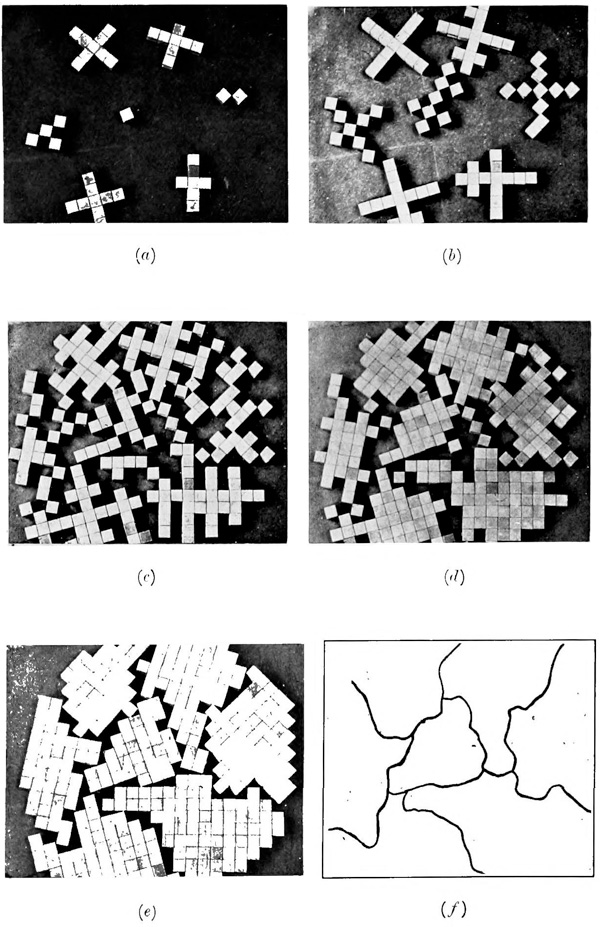interferences

Plate IV, Fig. 14
cropped (and diagrams a – e removed from their borders)
Illustrating Chapter IV. The Micro-structure of pure metals and of alloys
in Walter Rosenhain (1875-1934 *), An Introduction to the Study of Physical Metallurgy (1914)
at Open Library
—
“...and they are now recognised to be true crystals, the metal being thus an agglomerate of crystals, much as a mass of rock-salt or of granite is an agglomerate of minute crystals. It is true that these crystals lack one of the most striking features of many crystals, and that is the regular geometrical outline which we see in specimens of Iceland Spar or Rock Crystal; but this absence of geometrical form is due to the fact that one of these crystals have had the opportunity for free growth which is requisite for the development of geometrical forms; when a crystal of salt is formed in a solution its surfaces remain free to grow in the liquid surrounding them, but in the crystallisation of a metal the growth of each crystal has been stopped by the interference of a neighboring crystal, so that each of these grains is bounded, not by any regular geometrical outline, but by the more or less irregular surface upon which two adjacent crystals have met in the process of their initial formation.”
“The manner in which this occurs may be made clearer by an analogy with the way in which children’s building blocks might be piled up to cover a given area. If the blocks were all exactly alike in size and shape it would, of course, be possible to lay them all exactly parallel to one another in a single continuous pattern all over the surface to be covered. But for this purpose it would be necessary to begin the process at a single point and to work outward from that alone. If the work were begun by several operators at the same time, each starting from their own chosen centres and working each to his own scheme, without reference to that adopted by any of the others, a very different result would follow: each man would build up a regular pattern, and all the patterns would be essentially alike, but they would not be parallel or ‘similarly oriented,’ so that where they met they would form irregular joints. The diagram of Fig. 14, Plate IV., shows five stages of such a process, and the final result...” p 62
tags: blocks; borders; Walter Rosenhain, An Introduction to the Study of Physical Metallurgy (1914)